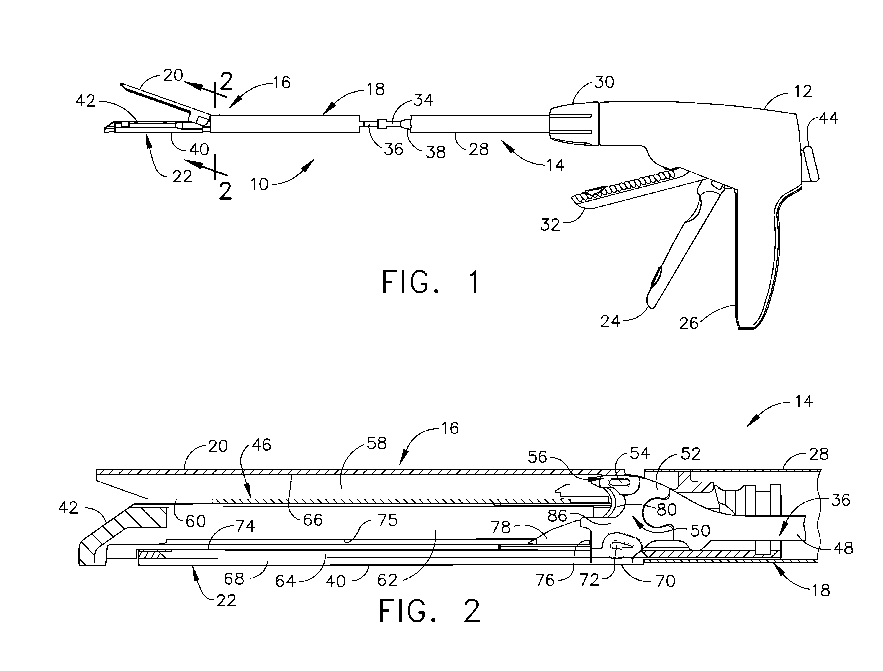Today’s Patent: Surgical Fastening Instrument
In the realm of modern surgical tools, innovation is not just about precision—it’s about improving patient outcomes, reducing surgical trauma, and enhancing control for the surgeon. The Surgical Fastening Instrument patented under US11058314B2, granted on July 13, 2021, represents such a leap in surgical instrumentation.
This patent was awarded to inventors Matthew D. Timm, Frederick E. Shelton IV, and Jerome R. Morgan, and is assigned to Ethicon LLC, a prominent player in the field of medical technology. The invention addresses key challenges in minimally invasive and robotic-assisted surgeries, providing a smarter and safer way to secure internal tissue.

🔎 Invention Overview: What Makes It Unique?
At its core, this Surgical Fastening Instrument is designed to apply fasteners—such as surgical staples or clips—inside the body during laparoscopic or endoscopic procedures. However, what sets it apart from traditional staplers or fastener applicators is its mechanically and electronically integrated system that optimizes:
- Tissue clamping
- Staple firing
- Fastener formation
- Feedback during deployment
The instrument is capable of dynamic adjustments, real-time feedback, and multiple cycles of reloading and reuse, making it not just a tool but a high-performance surgical assistant.
⚙️ Key Components and Working Mechanism
The Surgical Fastening Instrument includes the following advanced components:
1. Shaft Assembly
The shaft is elongated and designed to navigate through small incisions. It houses mechanisms for actuation and transmission between the handle and the end effector (the working tip).
2. Articulating End Effector (Anvil + Cartridge Assembly)
The end effector comprises two jaws:
- Anvil Jaw: Holds the tissue in place and helps in shaping the fastener.
- Cartridge Jaw: Houses the fasteners (like surgical staples) and deploys them into tissue.
The articulation mechanism allows the end effector to pivot, rotate, and reach difficult anatomical angles, providing greater surgical access and visibility.
3. Clamping Mechanism
Unlike traditional manual staplers, this invention incorporates smart clamping, where tissue thickness is detected, and the system dynamically adjusts pressure to prevent over-compression or slippage.
4. Firing System with Feedback Loop
One of the most innovative aspects is the inclusion of a powered firing system (possibly electrically or pneumatically actuated), which:
- Applies uniform force across the fasteners
- Provides tactile, visual, or audible feedback to indicate successful deployment
- Helps detect errors like incomplete staple formation or tissue misalignment
5. Reloadable Cartridge System
The design supports interchangeable cartridges, enabling multiple uses during a single surgery with different staple sizes or shapes depending on the tissue type.
🛠️ Use Case: Improving Surgical Outcomes
This Surgical Fastening Instrument is especially useful in procedures like:
- Gastrointestinal surgeries (e.g., resections, anastomosis)
- Thoracic surgeries (e.g., lung resections)
- Bariatric procedures (e.g., sleeve gastrectomy)
- Gynecological surgeries (e.g., hysterectomy)
It helps surgeons perform precise, secure, and consistent tissue closure, which is crucial for preventing post-operative complications like leakage, bleeding, or tissue necrosis.
📊 Innovation Impact: Why This Patent Matters
This invention addresses long-standing challenges with earlier surgical staplers, such as:
- Inconsistent staple formation
- Limited mobility in tight anatomical spaces
- Lack of intraoperative feedback
- High chances of user error due to manual force application
By integrating smart feedback mechanisms, ergonomic controls, and modular design, the patented instrument aligns perfectly with the needs of robotic surgery platforms and minimally invasive techniques—which demand both flexibility and precision.
⚖️ Patent Relevance in IP Strategy
From an intellectual property perspective, this patent reflects a broad and deep protection strategy. The claims cover not only the mechanical components but also:
- The methods of operating the device
- The feedback systems
- The interchangeable cartridge system
- The safety locking and reset mechanisms
Such a comprehensive approach strengthens Ethicon’s IP portfolio and discourages infringement or workarounds by competitors in the surgical tools industry.
🧠 Conclusion
The Surgical Fastening Instrument (US Patent 11058314B2) is a shining example of how engineering excellence meets surgical need. This device enhances the surgeon’s capabilities while ensuring that patients benefit from less invasive, faster, and safer procedures.
For IP professionals, it stands as a benchmark for how detailed, layered, and multifunctional patents are structured in the competitive world of medical device innovation. Whether you’re an inventor, IP analyst, or healthcare innovator, this patent underscores the importance of protecting cutting-edge solutions in life sciences.




 +1 888 890 6411
+1 888 890 6411